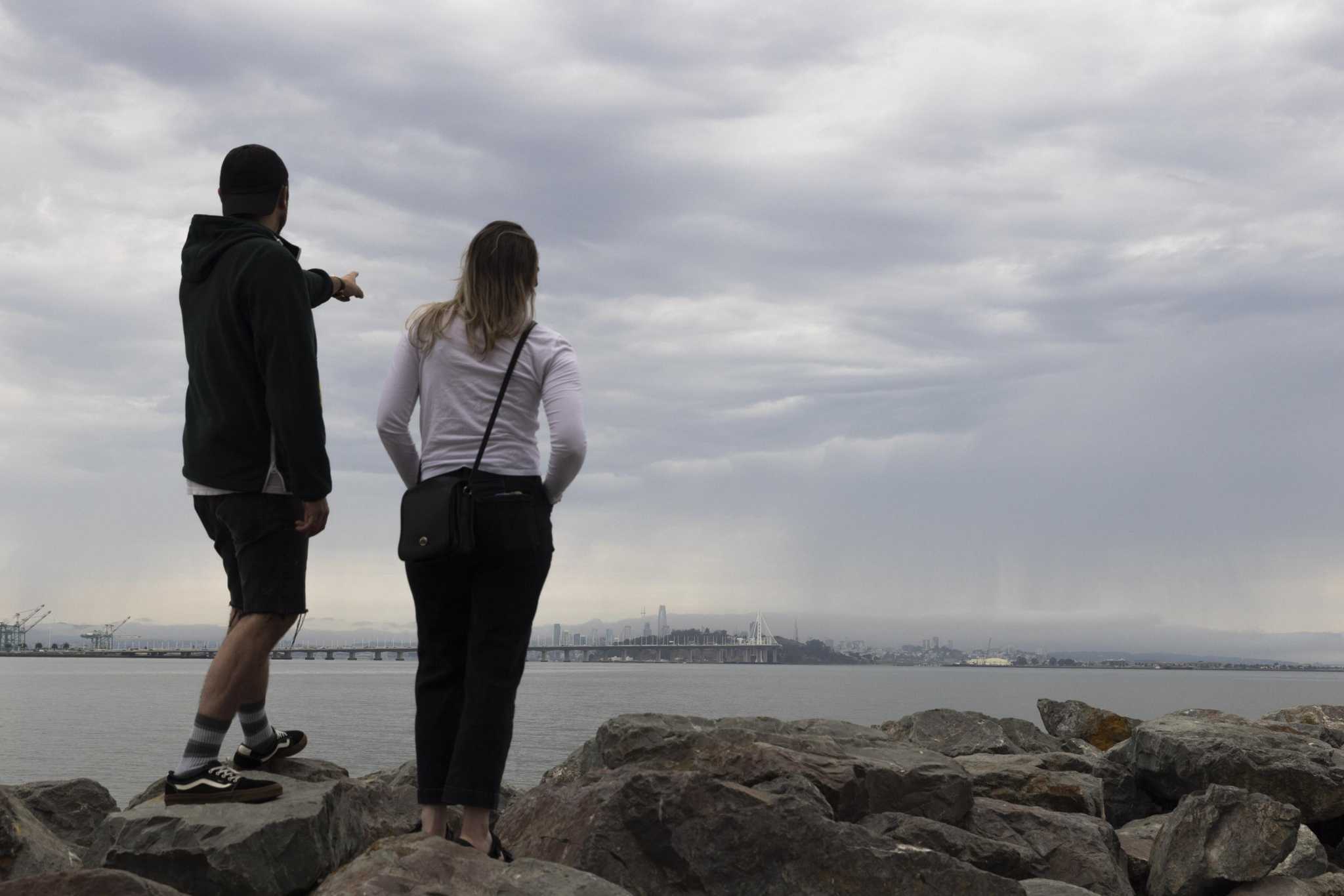The humid weather in the Bay Area during the past few days may have felt like being transported to Hawaii.
A few factors are combining forces to bring muggy weather to California: monsoonal moisture, remnants of a weakening tropical storm and a low-pressure system over the Pacific Ocean.
“We’ve been getting a little bit over the Bay Area — nothing like they have over southeast California, where they’ve had a lot of flash flood warnings [and] road washouts,” said Brian Garcia, a meteorologist with the National Weather Service Bay Area office.
California and the southwestern United States are in the midst of monsoon season. But the effects of monsoons can range from light drizzles to lightning-packed thunderstorms.
“A monsoon is a pattern of wind and rainfall that usually spans a very large part of a continent — or even an entire continent,” said William Boos, an atmospheric scientist at UC Berkeley.
This sticky summer weather is set to persist through the week.
On tap Wednesday and Thursday, the Bay Area and Central Coast could see more light rain showers and high humidity levels. Toward the end of the weekend, residents can expect clearer skies as the muggy weather pattern fades away.

Large, dark storm clouds linger over San Francisco as seen from the waterfront of the Emeryville Marina in Emeryville, Calif. Monday, Aug. 1, 2022.
Jessica Christian/The ChronicleThe humidity could return again, though, as monsoons can persist for months.
“Monsoons, in general, are created by intense sunlight supplying energy to land and the atmosphere during summer,” said Boos. “That creates these large continental-scale circulations.”
In North America, this atmospheric circulation can transport moist air over the Gulf of California inland to the Desert Southwest, including California.
In the Bay Area and Central Coast, the monsoon system has meant light showers and soupy feeling weather. From Sunday through Monday afternoon, rainfall totals ranged from a few hundredths to nearly a tenth of an inch from Santa Rosa to Santa Cruz.
But in Southern California and Nevada impacts have been severe. Torrential downpours and flash floods forced the closure of roads in and out of Death Valley National Park.

In this photo released by the National Park Service, is the damaged intersection of Kelbacker Road and Mojave Road in the Mojave National Preserve, Calif., Sunday, July 31, 2022. Roads in and out of Death Valley National Park were closed after lanes mud and debris inundated lanes during weekend flash floods in eastern California, western Nevada and northern Arizona. Storm cells dumped localized heavy rain across the region, prompting closures of highways and campgrounds. (National Park Service via AP)
Associated PressOn top of the monsoon system moving through California, the remnants of Tropical Storm Frank, moving off the Pacific coast of Mexico, are also providing additional moisture. A low-pressure system over the Pacific Ocean that is spinning counterclockwise is only adding moisture to the mix.
This low-pressure system is essentially funneling moisture from the tropical storm and monsoon northward, Garcia said.
One concern with the current weather system is the possibility of storms and—more worryingly—lightning. Lightning strikes could potentially ignite dry vegetation and kick off wildfires.
In far Northern California and Southern Oregon where the McKinney Fire is burning, the same monsoon system kicked off new fire starts over the weekend, with hundreds of lightning bolts touching down.
The Bay Area has fared better, unlike in August 2020, when the historic lightning complex fires broke out across the region.
“So far, we haven’t seen any significant lightning with the showers that have been going through,” Garcia said.
Jack Lee (he/him) is a San Francisco Chronicle staff writer. Email: [email protected]
